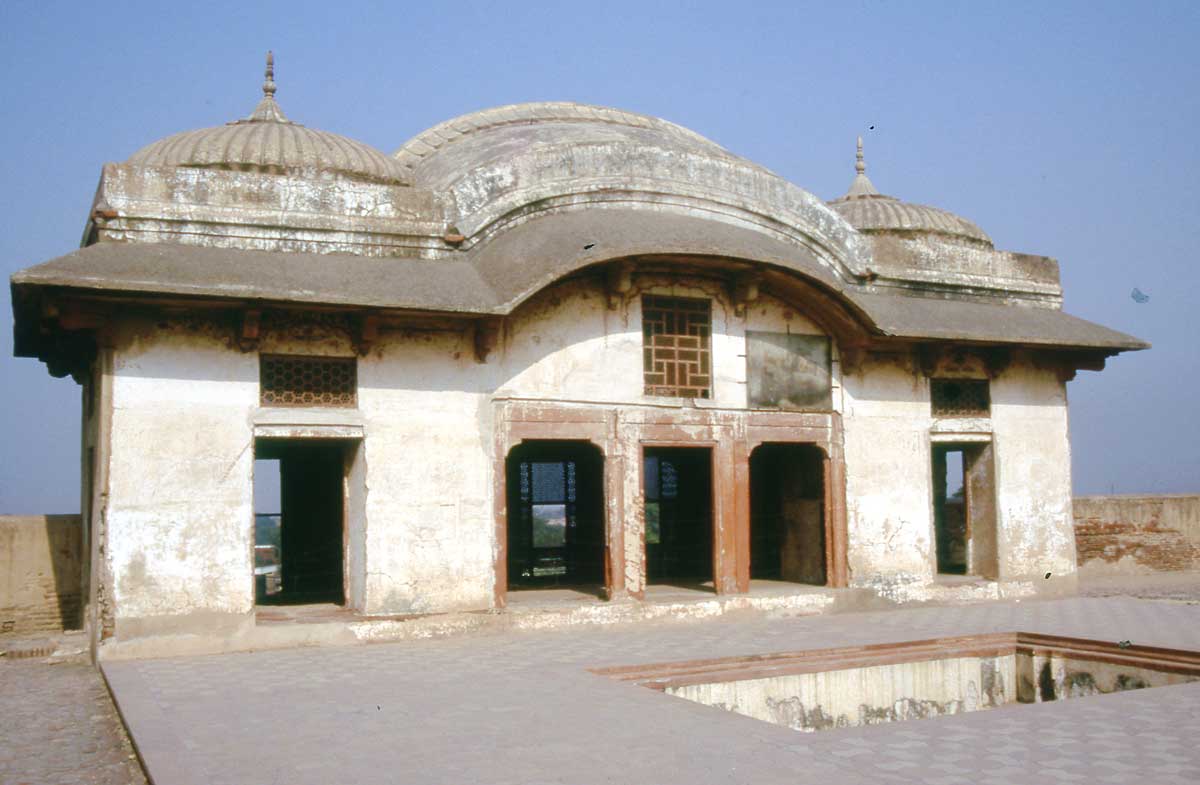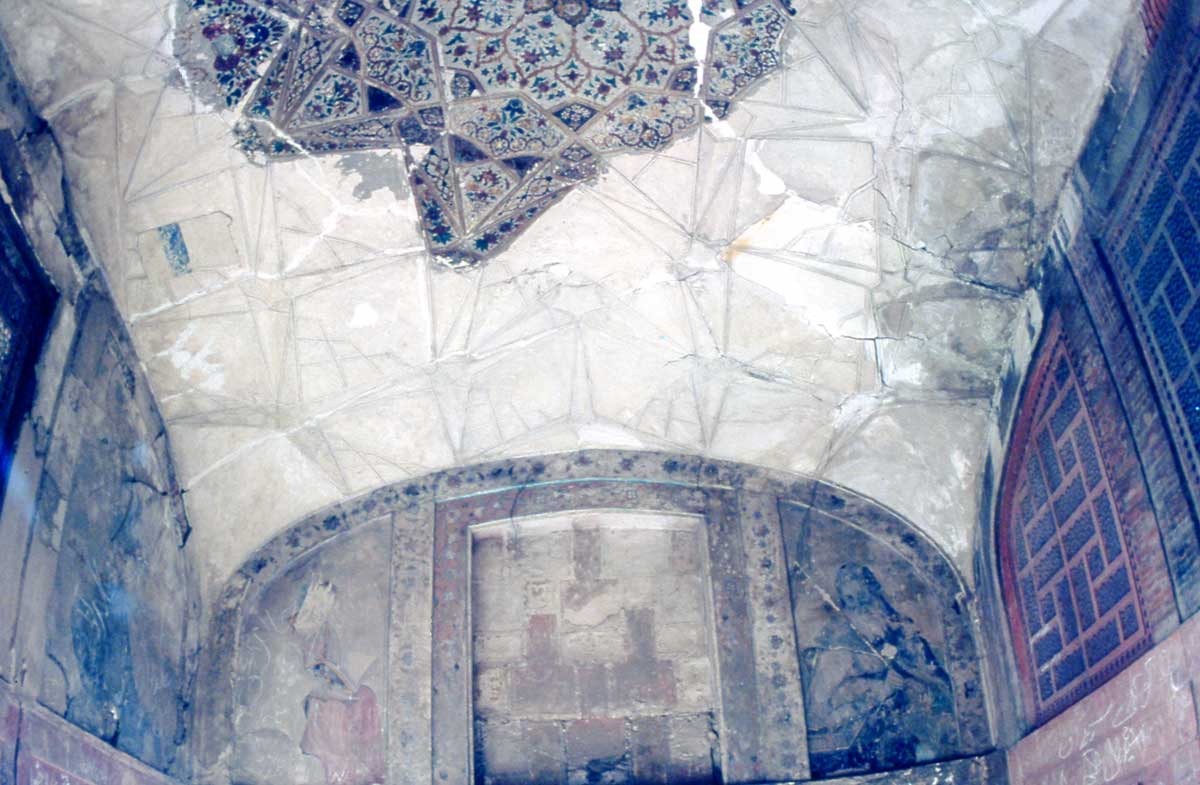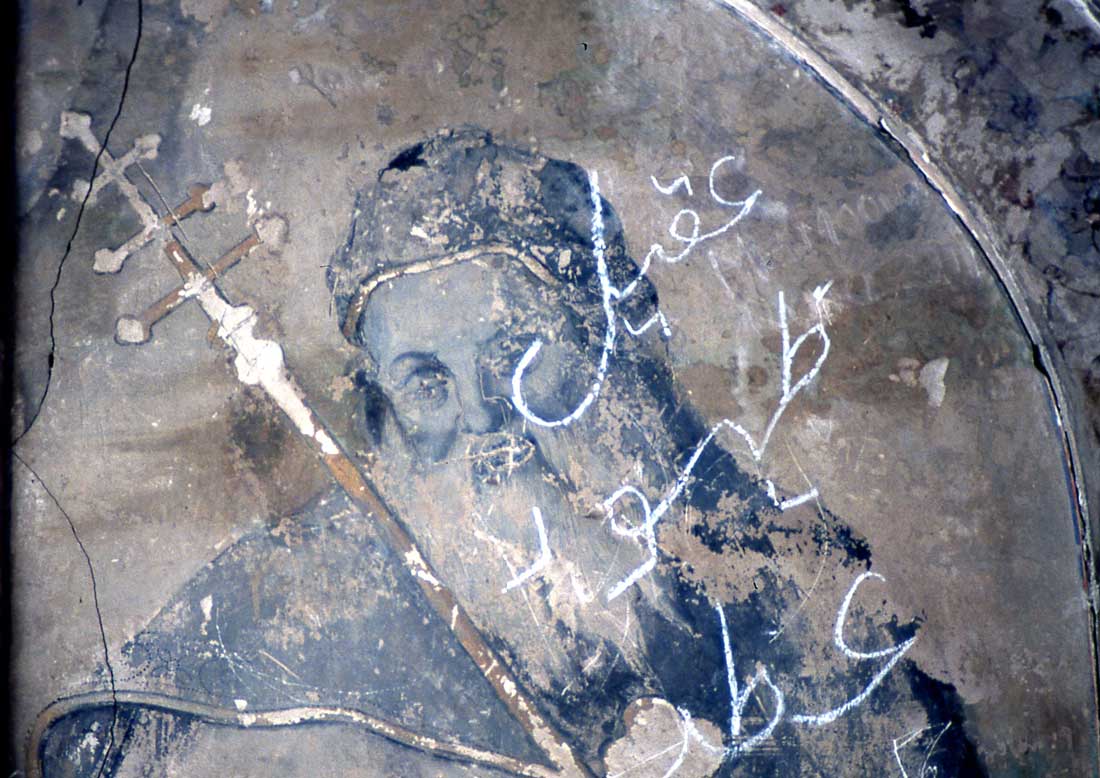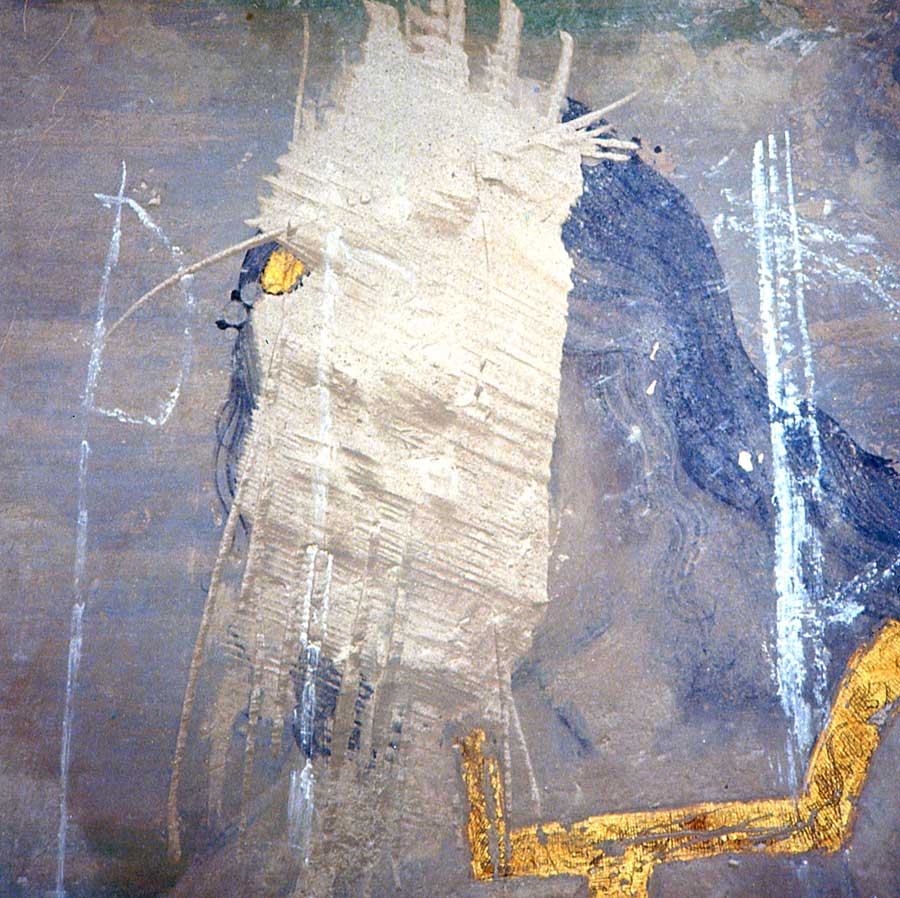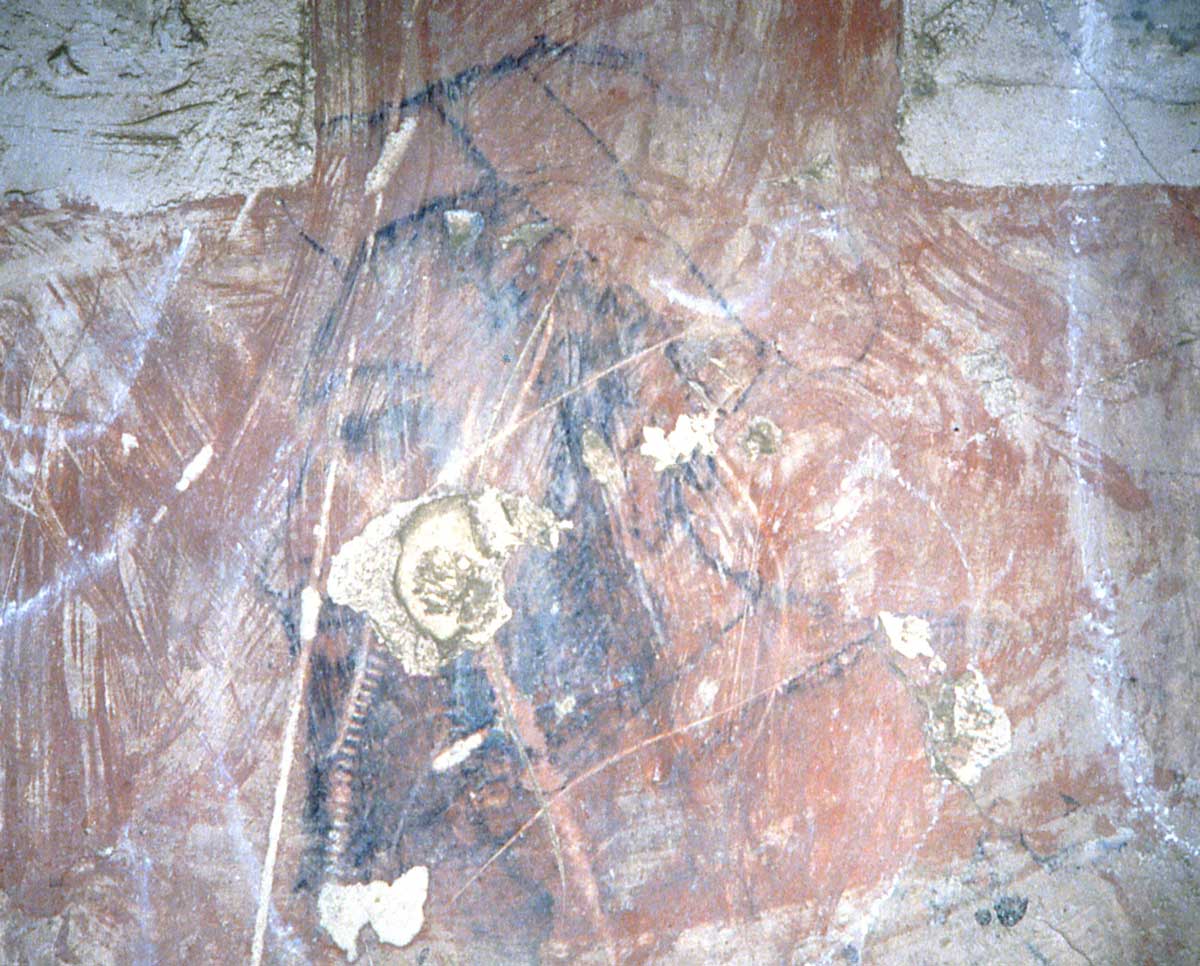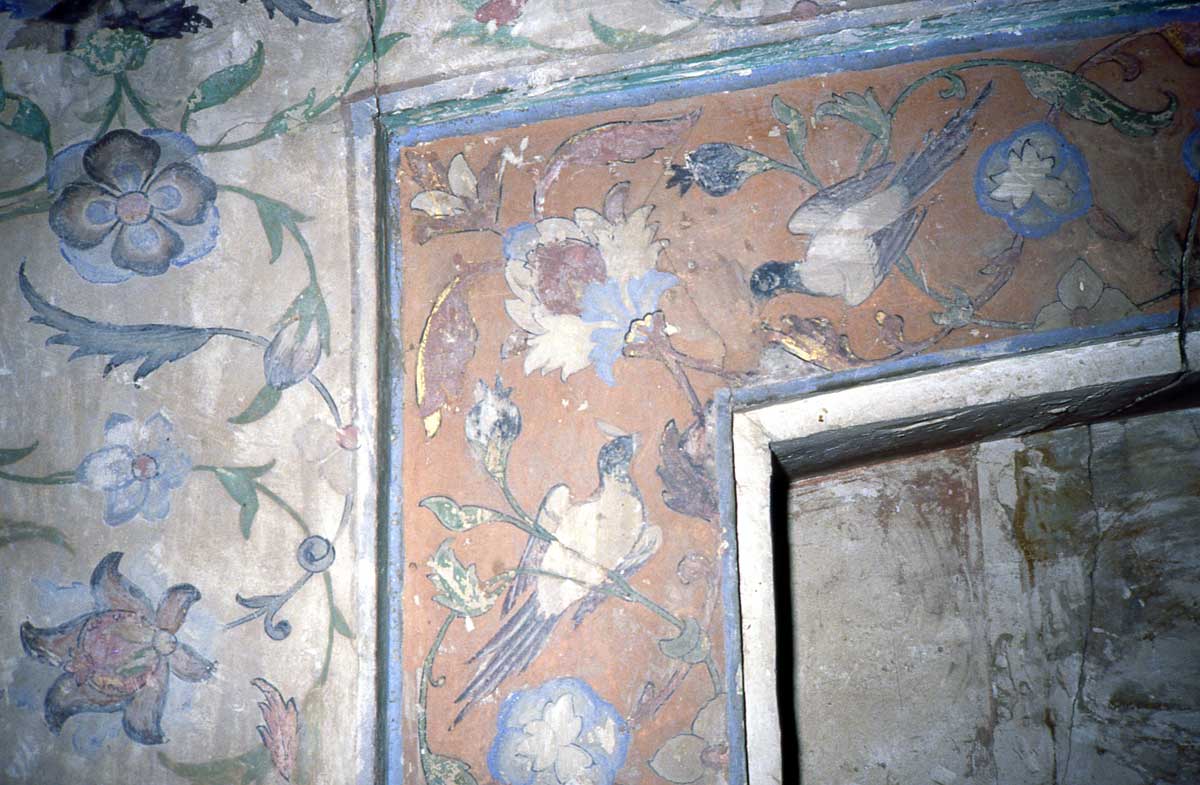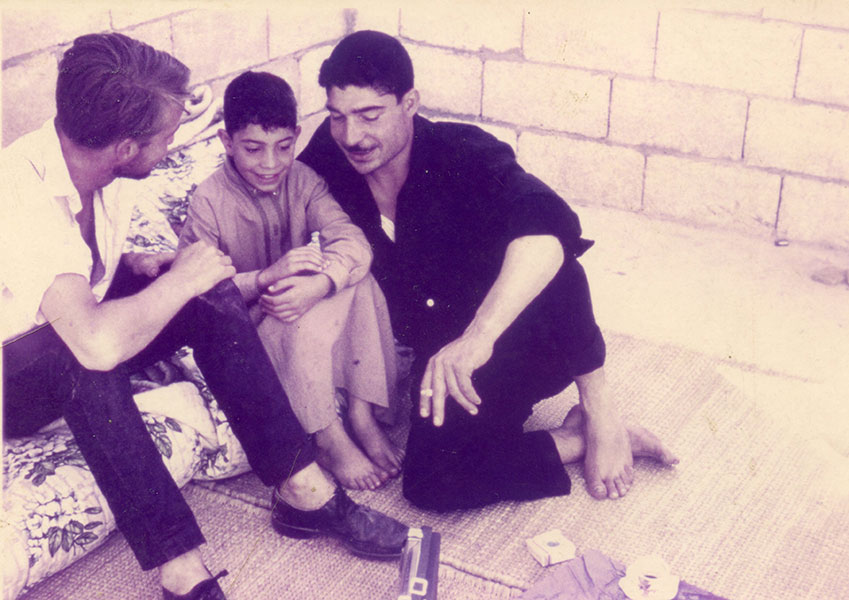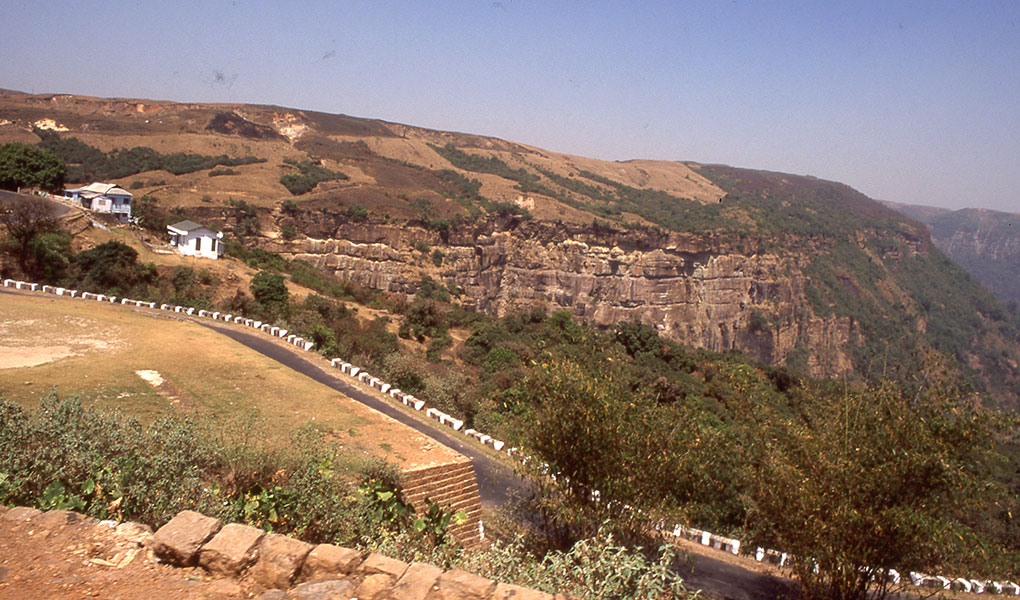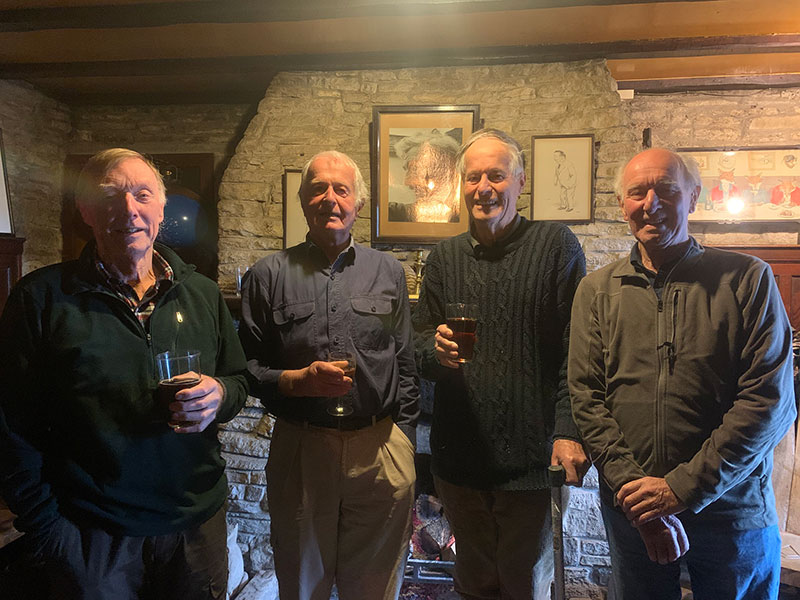49. The Sedari – An Unbalanced Pavilion
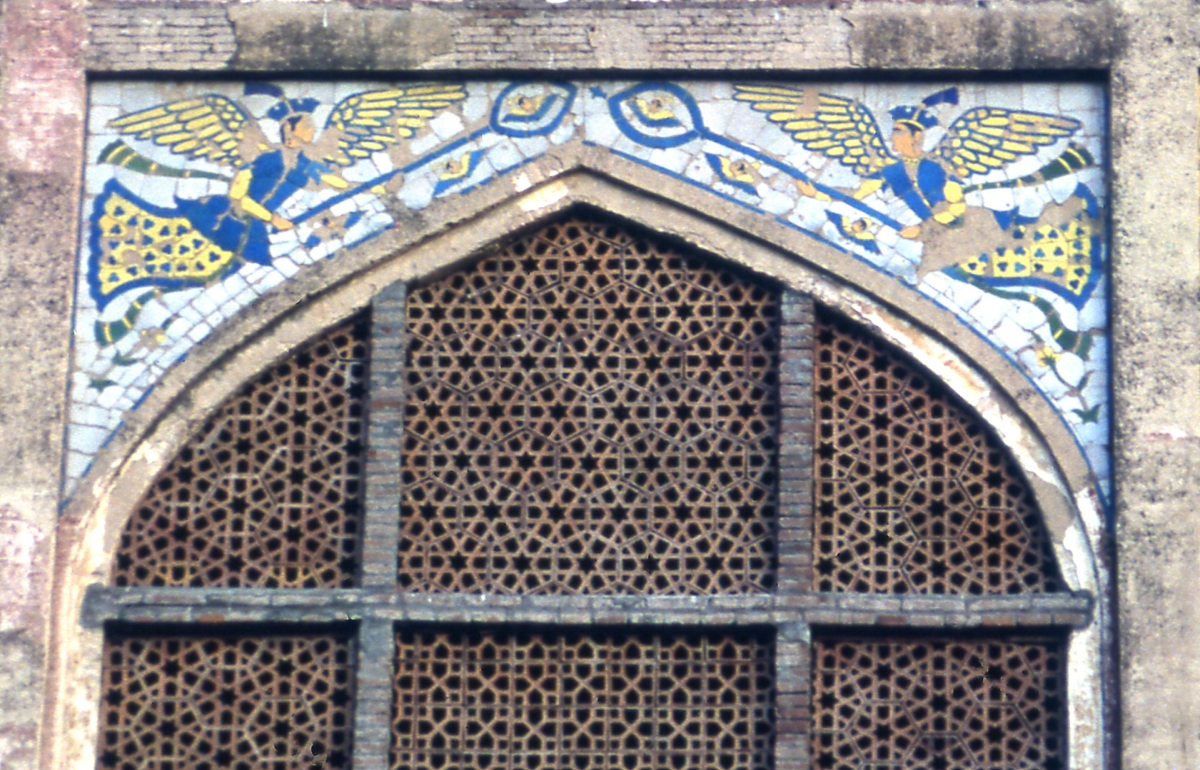
48. Lahore’s Colourful Black Bastion
April 1, 2021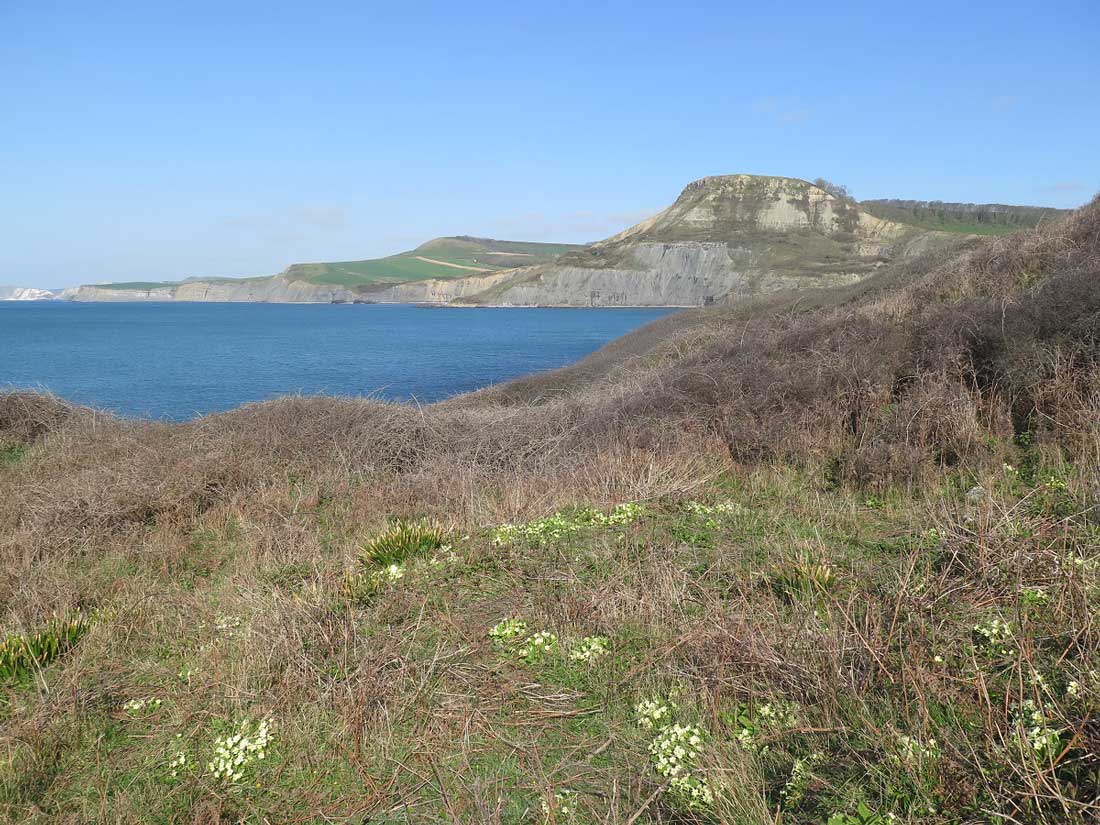
50. A Proper English Spring
June 3, 2021O
n my first day in Lahore Fort in search of murals, in 1991, after examining those in the Kala Burj (Black Bastion - Blog 48), I looked at other painted buildings. Most clearly belonged to the Sikh period (1799-1849), none competing with the Mughal work. There was one exception.
Quoting from that day's diary: '... the oddest paintings were in a little pavilion, oddly situated to jar with the construction of the Jahangir Court. It stands on the North Wall and has a little dome at either end and a Bengal arch in between. An attempt has been made to cut it off with barbed wire, but people have walked in nevertheless, flattening the wire. Inside are big copies of Christian Renaissance pictures with recent graffiti and a couple of faces scraped away – since they were uncovered, surely – by the more inspired citizens. Surely not genuine Jahangir, but who else would paint the things? One would expect the little pavilion to be Sikh. The floral frieze around the room is rather delicate.'
This building has an east-west axis with a square, dome-topped room at either end of a bangla-arched hall; it is called the Sedari (Three Doors). There are more than three entrances but some would have been sealed by red sandstone jalis>(lattices). The oddity is that it stands alone on the east side of the Bari Khwabgah, the imperial bedroom central to the north side of the court. Apparently its jawab (response), a similar pavilion west of the Khwabgah affording symmetry, survives only in photographs of a mid 19th century model of Lahore.
The square end rooms retain a little painting but the central room is remarkable. Its ceiling bears a patch of floral work in the ochre palette of other Sikh work in the fort but on the walls are six variably-damaged European portraits of Christian saints by finer artists. A paper by I. H. Nadiem in Pakistan Archaeology 1969 places these panels after 1849 when the fort was garrisoned by British troops. This is reasonable since the building immediately east of the Sedari was used as the garrison's Catholic chapel. These pictures, like those in the Kala Burj, have been defaced then plastered over. Their Christian origin was shared with the Baroque cherubs of the Kala Burj. In subject, style and palette (red lead, smalt and copper chloride) the decoration closely resembled that in Kala Burj. The frames, which were painted freehand, show running plants containing sometimes imagined, sometimes realistic birds and the lotus bud forms, popular in Jehangir's era. In both buildings a pair of tree pies or doves often face each other at the angles of windows and arches. This must also be part of Jehangir's project, completed in 1618, which he examined in 1620 and praised in his memoir, Tuzuk-i-Jehangiri as: ..without exaggeration charming residences … embellished with paintings by rare artists.
Contemporary European travellers often refer to the popularity of European art at the courts of Akbar (1556-1605) and Jehangir (1605-27). Both emperors were freethinkers with an eye for fine craftsmanship. Both encouraged religious men of all persuasions to visit their court. Foreign pictures became highly regarded as presents. The principal vehicle of European art was religious, either paintings or mass-produced monochrome prints. Such saintly beings depicted in the Sedari panels might well appear between the pages of a missal. Jesuits from Portuguese-ruled Goa, frequent visitors, misreading the emperors' interest in such pictures as being for the message not the medium, hoped for their conversion.
As for the subjects, despite a Catholic upbringing, I am vague about the many saints who haunt the Christian Heavens. After the then Papal Nuncio, Mgr Luigi Bressan attended my 1991 lecture on these murals he visited the building and was useful in suggesting identities for the saints portrayed.
The West Wall: The north panel holds the most striking figure, a bearded pope in dramatic Baroque style, wearing a cap and mantle and holding a three-barred papal cross against his right shoulder. Beside his right arm lie books resting on a black cloth perhaps once red. Along the fringe of his mantle can be seen the tell-tale dotted lines of stencilling. The original was probably copied onto a grid, drawn enlarged and its outline pierced to form the stencil for transferring it onto the lime plaster. This probably represents Gregory the Great, an image of whom, labelled Italian School 17th century, on mutualart.com strongly resembles it. Was this the origin of a print or do both have a common source?
Central, above the doorway, is an unpainted sunken panel. Its frame's decoration, on a pink ground, includes tree pies and lotus buds. Areas of rough plaster may indicate removed mirrors or glass paintings. The neatly finished pink plaster could denote the position of chinikhane, little shelves for displaying porcelain objects.
The south panel, jawab to the pope, shows a seated young man in a pink robe and green cap reading a large book. His face, viciously destroyed, suggests that someone identified him as an unveiled woman. Mgr Bressan suggested this as St John the Evangelist.
The South Wall: These paintings are in poor condition.
On the west a grey-bearded man, a light-coloured cloak closed across his chest by a golden chain, genuflects towards the east offering a gold platter of fruit, perhaps. His left foot wears a sandal and other garments appear black, perhaps oxidised red lead. Plants grow by his knee. Was he one of the Magi?
The central panel holds a red sandstone jali. Beneath this is a rectangular doorway with, on either side, a shouldered-arch opening once holding a stone jali
To the east a younger bearded figure also genuflects, his profile against a blue sky. Was there once another figure at the centre to whom both men kneel? He wears a copper green robe from which a bare arm projects, his hands clasped in position of prayer. There are bangles or shackles around his wrists. His trailing black sash is reminiscent of those of the hidden angels in the Kala Burj. Bressan suggested this as St Jerome.
The East Wall: The south panel contains a woman, her face scraped away. This conceals her identity because the most frequent suggestion has been St Lucy, sometimes depicted with two eyes on a platter, giving her eyes to God. Here, the platter bears many round objects: did the Mughal artist think two eyes too mean a gift? St Dorothy is also mentioned, often shown with band of flowers or stars around her head. Here the defacer has left untouched one gold bead beside two pearls of head band. A line of birds flies faint in the background.
The central panel reflects that on the west wall save for one feature: on the pink ground is an unfinished profile of a bearded man wearing a turban in the style shown in portraits of Shah Jahan. This has been purposefully damaged – by a musketball is a fanciful suggestion. We are now in the realm of dreams. That would never have been done to an emperor; it would to Dara Shukoh, who was Governor of Lahore in 1635, in Lahore again for a fatal month in 1658. But his is another story...
The north panel holds a bald old man with a long beard, grasping a staff. Here the experts are unanymous: St Anthony Abbot. He was often accompanied by a pig – but even Jehangir would not have sanctioned that! In her paper on contemporary paintings commissioned by Jehangir in Agra's Rambagh pavilions Koch mentions ...a small fragment of a man (?) leaning on a stick. Later, I found this very faint, wrecked picture; what remains could have come from the same image.
The iconoclastic emperor Aurangzeb would have ordered such paintings destroyed. Someone, ordered to deface, punched over the creeper forming the border of this panel. Coming to a small bird he carefully punched all around it but left it whole. I like that man!
*
The best surviving Mughal murals, when last visited these paintings in protected buildings in Lahore Fort, Pakistan and Rambagh, India shared a common neglect. They don't need repainting, just protecting!

